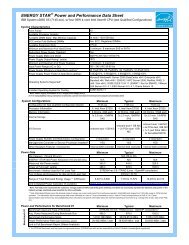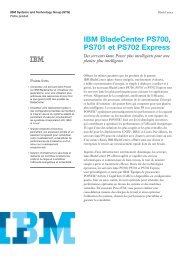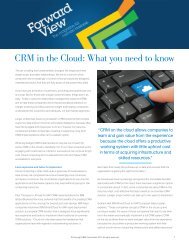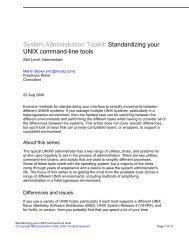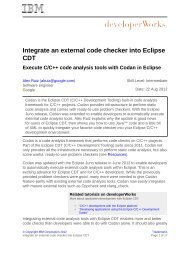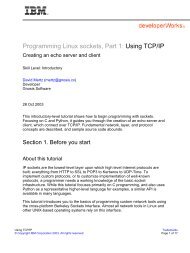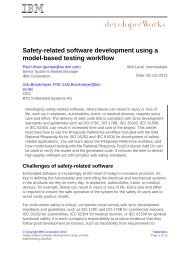TEC Workbook - IBM
TEC Workbook - IBM
TEC Workbook - IBM
Create successful ePaper yourself
Turn your PDF publications into a flip-book with our unique Google optimized e-Paper software.
2.1.5 WebSphere DataPower Configuration Architecture<br />
<strong>IBM</strong> Software<br />
A single WebSphere DataPower appliance has the ability to host numerous service configurations. The<br />
following diagram shows a top-level object hierarchy of a WebSphere DataPower service.<br />
= Object<br />
= Service Parameter<br />
= File<br />
Threat Protection<br />
and<br />
Protocol Parameters<br />
Front Side<br />
Handler<br />
Supporting<br />
Protocol Objects<br />
SSL Proxy<br />
Crypto Profile<br />
Key/Certificate<br />
Objects<br />
Key/Certificate<br />
Files<br />
DataPower Service<br />
Backend Server<br />
Address<br />
Processing Policy XML Manager<br />
Processing Rules<br />
Processing<br />
Actions<br />
AAA Policy XSL/XML Files<br />
Match Rule<br />
This diagram shows some of the objects associated with a given service. For example, the service could<br />
be a Multi-Protocol Gateway that you create for handling requests. The service will use a Front Side<br />
Handler object which identifies an IP address and port. It also includes an SSL Proxy object which<br />
includes the necessary objects for SSL encryption. The service has a Processing Policy (for the service<br />
processing phase), and that policy contains one or more Processing Rules, and each rule contains one<br />
or more Processing Actions. Some of the objects will be created for you as a by-product of configuration<br />
wizards, and others will be created by drag and drop actions within the WebGUI.<br />
2.2 Creating the Multi-Protocol Gateway service<br />
In this section, you’ll be creating a service that will receive messages posted from your workstation, and<br />
perform a variety of actions against the message’s XML payload. There are several steps you’ll follow to<br />
create the service object:<br />
● Specify the basic information about the Multi-Protocol Gateway Service.<br />
● Create an HTTP Front Side protocol handler to handle HTTP requests.<br />
● Create a Processing Policy and Processing Rule<br />
To get things started, you’ll create a service proxy that simply acts as a pass-thru. Whatever you post to<br />
the service proxy will get forwarded to an echo service running on the backend server. The response will<br />
pass back through your proxy and then be returned to your workstation.<br />
Lab 2 - Working with XML Page 31




